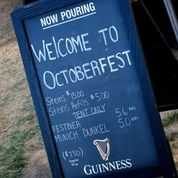"It is not that I love Maryland less, but freedom more." F. Douglass
Maryland’s African American history officially dates from 1634. The colonies’ initial black population probably came from Virginia but was quickly supplemented by sales directly from Africa, the first “documented” Africans arriving in 1642. More than most states Maryland’s stance on slavery was shaped by political events. In 1639 all slaves’ were stripped of legal rights and in 1664 the Maryland Assembly deemed the enslaved slaves for life.
After the American Revolution the state’s economy began to focus on industry and technology and there was less need for agricultural slavery and slaves were rented out and competed with white workers. There were more free blacks in Baltimore than in any other Southern city and there were numerous black churches and support organizations. In 1850 more than 25,000 free blacks resided in Baltimore. Slavery was abolished in the new State Constitution on November 1, 1864 but coerced apprenticeship for blacks under 21 was allowed.
Douglass was familiar with these same streets and structures in the area. At eight years old he was sent to Fells Point, Aliceanna & South Durham Streets, to work for Hugh Auld and here Mrs. Auld taught him to read. Her husband stopped her but Douglass devises ways to continue by getting white playmates to teach him. He purchased his first book, The Columbian Orator, in Nathaniel Knight’s shop at 28 Thames Street. In 1831 he joined Bethel A.M.E. Church.
Douglass was returned to St. Michael’s as property in an inheritance. He was not sold after an attempted escape but was returned to Fells Point in 1836. He was apprenticed as a shipyard caulker and was severely beaten by whites because they resented the competition. One out of six shipyard workers at the time was African American.
Frederick Douglass Isaac Myers Maritime Park’s Douglass-Meyers Museum details his life as a child and youth in the shipyards through interactive exhibits. The museum also relates the story of America’s first black owned shipyard, the Chesapeake Marine Railway and Dry Dock Company. A bronze bust of Douglass and interpretive panels are on the exterior.
English supporters purchased Douglass freedom for $711.66, $25,008.33 today, from Hugh Auld in December 1846. The orator and abolitionist returned to Sharp Street Memorial Church, where he had been a choir member, in 1864. He spoke on equal rights and personal dignity. In 1892 he purchased land and built five rowhomes in Strawberry Row, 516-524, to be rented to African Americans. The homes are now known as Douglass Row on South Dallas Street. There is a plaque on his former residence at 524. |
The only wax museum dedicated to African American history is located in Baltimore. The National Great Blacks in Wax Museum begins with an interactive slave ship exhibit and guides you through the history chronologically and galleries are thematic. A remarkable likeness of Frederick Douglass in his political prime is on the main floor. Duck Duck Goose, 814 S. Broadway, is absolutely awesome and when in Baltimore it is not to be missed. Chef Ashish Alfred puts a unique and personal twist on classic French brasserie using the freshest ingredients and meticulous preparation. With chic ambience, creative décor, optional patio setting and exemplary service dining here is a true gourmet experience. www.ddgbaltimore.com |
Baby’s on Fire is another of Fell’s Point singular restaurants. Breakfast and lunch are served all day in and outside. It is adjacent to the Sound Garden, the city’s largest independent record shop, is recognized by Rolling Stone as the country’s 2nd best record store. Ideally situated waterside on the harbor on Baltimore’s Recreation Pier sits the extraordinary Sagamore Pendry Baltimore. The renovated pier reflects its history and architecture and incorporates superior service, artfully curated public spaces and plush accommodations with deluxe linens, bath products and harbor views. Trendy amenities include spa services, pool with private cabanas and bar and 24-hour exercise room. Pendryhotels.com/baltimore |
Guinness Open Gate & Barrel House in Halethorpe, MD was selected as the site of the first purpose- built Guinness American brewery. It is on the site of a 90-year old barrel rickhouse and opened in 2017. Guests are invited to tour the facility, dine, shop and attend signature events. Curbside pick-up is available. The brewery is presenting its second annual Oktoberfest on two weekends, September 25-27 and October 2-4. guinnessbrewerybaltimore.com
The wonders of Baltimore are only 90-minutes from Philadelphia. #visitMaryland















































